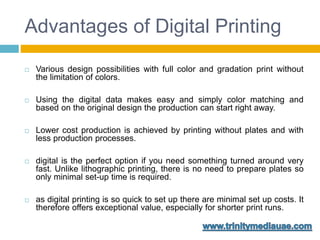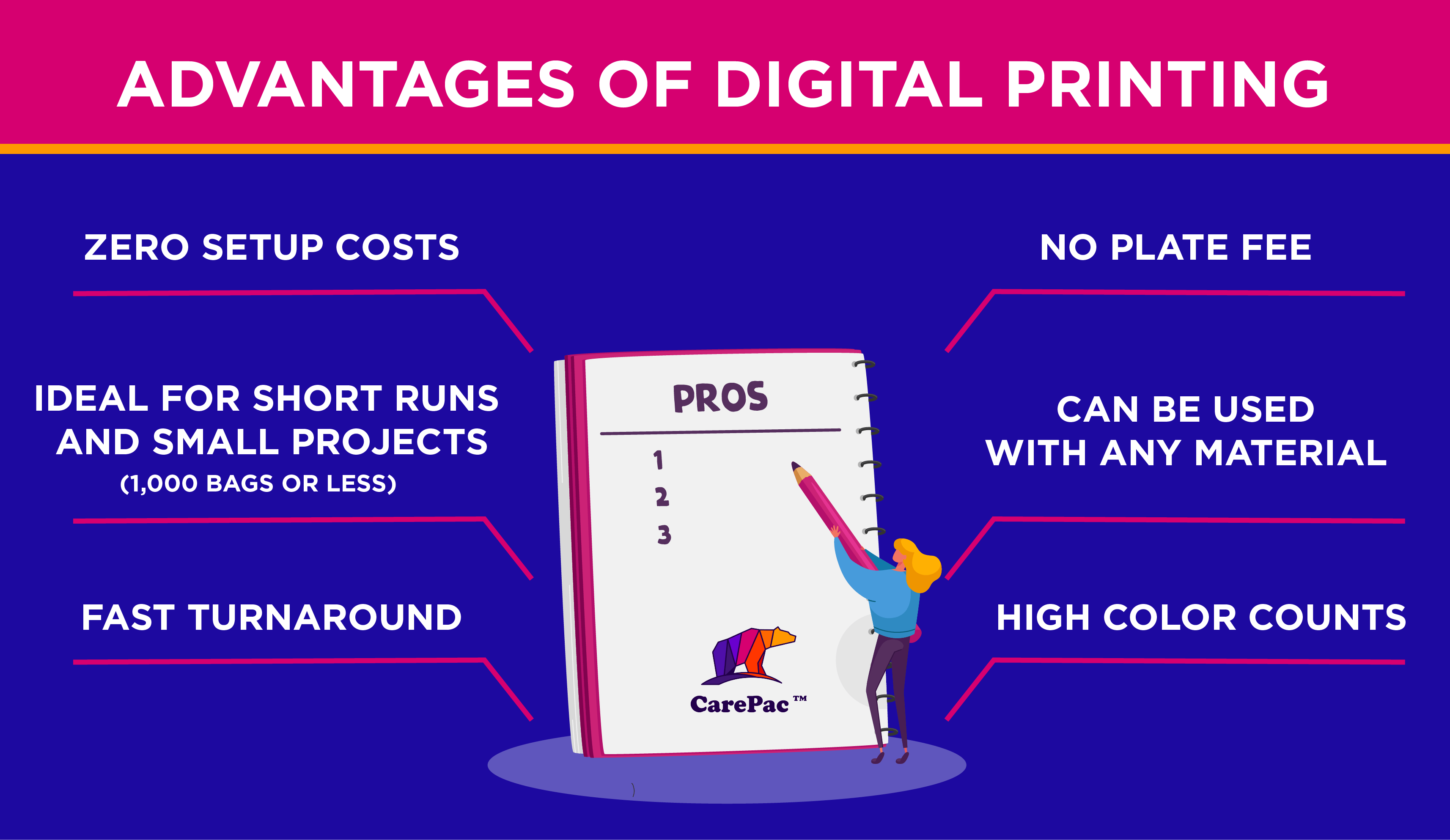The Facts About Digital Printing Uncovered
The Facts About Digital Printing Uncovered
Blog Article
The 5-Second Trick For Digital Printing
Table of Contents9 Simple Techniques For Digital PrintingDigital Printing - The FactsLittle Known Facts About Digital Printing.The 10-Minute Rule for Digital PrintingNot known Facts About Digital PrintingUnknown Facts About Digital Printing
Variable information printing, such as direct mail with individualized codes and addresses, is ideally matched for digital printing. Digital quick printing just needs 4 steps of layout, testimonial, printing and binding to get every little thing done. Digital fast printing has an unmatched advantage: print on need.According to PMMI, digital printing allows brands and makers to respond promptly to consumer demands while improving the supply chain, decreasing warehousing price and waste, and taking pleasure in faster time to market. That all sounds excellent, but how does this innovation do all that? The major differentiator of these innovations is that there are no set-up charges and no plates with digital printing.
All about Digital Printing
This results in quicker turn-around time and lowers expense when making use of digital printing.
Speedy production means obtaining your item to market faster. It additionally means it's simpler and faster to make adjustments later, when you alter a recipe, include a SKU, or produce seasonal product packaging. Digital printing is extremely adaptable, so it's easy to make modifications to the plan design rapidly. Everything returns to home plates.
With standard printing approaches, short-run printing is just not feasible. Since an excellent style can make or damage your item, digital printing consistently develops high-grade, clear and vivid graphics each time.
Digital printing is the process of printing digital-based photos directly onto a range of media substratums. There is no need for a printing plate, unlike with countered printing. Digital files such as PDFs or desktop computer publishing files can be sent out directly to the electronic printing press to print on paper, picture paper, canvas, textile, synthetics, cardstock and various other substratums.
7 Simple Techniques For Digital Printing
According to PMMI, digital printing allows brand names and makers to react rapidly to consumer demands while improving the supply chain, lowering warehousing expense and waste, and taking pleasure in faster time to market. That all audios fantastic, yet exactly how does this modern technology do all that? The major differentiator of these technologies is that there are no set up fees and no plates with digital printing.
According to Wikipedia, the best difference look at here now between digital printing and standard methods such as lithography, flexography, gravure, or letterpress is that there is no demand to change printing plates in electronic printing, whereas in these analog printing techniques home plates are consistently changed. This results in quicker turn-around time and lowers cost when using electronic printing.

Some Known Questions About Digital Printing.
With standard printing methods, short-run printing is simply not feasible. Because a great layout can make or break your item, electronic printing continually develops high-grade, clear and vibrant graphics each time.

According to PMMI, electronic printing permits brand names and suppliers to react swiftly to consumer demands while boosting the supply chain, lowering warehousing expense and waste, why not try these out and enjoying faster time to market. That all noises fantastic, however exactly how does this innovation do all that? The major differentiator of these technologies is that there are no set-up fees and no plates with digital printing.
The Ultimate Guide To Digital Printing
According to Wikipedia, the best distinction between digital printing and traditional approaches such as lithography, flexography, gravure, or letterpress is that there is no demand to replace printing plates in digital printing, whereas in these analog printing approaches the plates are continuously replaced. This leads to quicker turn-around time and lowers expense when making use of digital printing.
Speedy production implies obtaining your product to market much faster. It likewise means it's less complicated and faster to make adjustments later on, when you change a recipe, add a SKU, or produce seasonal product packaging. Digital printing is very flexible, so it's simple to make modifications to the plan layout promptly. All of it returns to the plates.

Digital Printing Things To Know Before You Get This
Digital printing is the procedure of printing digital-based photos straight onto a range of media substratums. There is no requirement for a printing plate, unlike with balanced out printing. Digital files such as PDFs or desktop computer publishing data can be sent out directly to the electronic printing machine advice to print theoretically, picture paper, canvas, fabric, synthetics, cardstock and other substrates.
Report this page